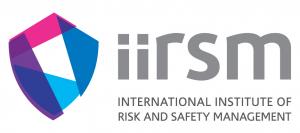Effective Safety Conversations Training
Still have a question?
If you can’t find the answer to your questions, please get in touch.
At a Glance

What we do
Who relishes slide after slide of dry theory and prescriptive learning? Some may; most would want to avoid it and we’re pretty sure you’ll be with the majority! As a general rule people learn best when they can apply theoretical concepts to their personal role and situation. So when covering material in our Effective Safety Conversations course, we follow our Explore > Engage > Embed model:
Explore > Engage > Embed
Each engagement is unique; we start by getting to grips with where you are as an organisation and work with you to tailor your training to maximise its impact and any previous training investments.
We seek to align materials to your organisation’s existing tools, processes and jargon where deemed appropriate, as well as incorporating case studies that will resonate with employees within your industry space.
- Why and how safety conversations can promote a positive safety culture
- The need to exemplify positive safety behaviours
- What’s in it for me?
- Types of conversation, their purpose and their usefulness
- Modelling
- Positive Reinforcement
- Safety Walks (Gemba)
- Words, Body Language and Voice Tone
- Errors & Violations
- Transactional Analysis
- Making it safe to talk
- Techniques for effective conversations – including:
- Active Listening
- Coaching
- Curious Questions
- Feedback
- How to identify the different types of safety conversations, e.g. Praise, Challenge, Keeping Mindful
- Handy tips on what to do and what to avoid
- The Golden Rule of Conversations
Space to put into practise the theory and practical skills and tools taught, giving delegates an opportunity to experience (feel and understand) how their own behaviours can impact the outcome of a safety conversation.
Why we do it
Our experience spanning four decades has shown us that having leaders who exemplify and commit time to holding safety conversations with their people is a key component in promoting a positive safety culture.
Yes, moving towards safety excellence requires robust systems and procedures; that’s a given. But it also requires a way of uncovering potential weaknesses in the design and operation of those systems and procedures. Periodic audits help to a point, but real time monitoring is best provided by an ongoing every day commitment to constructive communication.
To address real root causes, what we need is effective and regular communication that focuses on the drivers of behaviours and highlights potential for Out-of-Process situations that may lead to harm or loss. Safety conversations can often highlight issues in areas as diverse as security, safety, environment, health, quality and productivity – thus providing assurance across a wide range of risk.
Effective safety conversations rely on having an environment in which people feel comfortable expressing any concerns they may have, with an expectation that they will be appropriately addressed. Our Effective Safety Conversations Training equips delegates with the knowledge, understanding and practical skill set they need to conduct effective safety conversations in the work place and help to create that environment where it’s safe to talk about safety.
Who should attend our Effective Safety Conversations Training?
Our Effective Safety Conversations Training is designed for leaders at all levels, from shop floor to boardroom.
We recommend a maximum of twelve delegates (and a multiple of three) attend one course to ensure optimal learning and team cohesion.
What’s in it for you?
As this course is consultant-led rather than trainer-led, it is worlds away from regurgitating a pre-formatted script. Together with the delegates, we create a safe space to explore and practise the art of effective safety conversations. It’s a powerful experiential learning platform, leading to the following valued outcomes:
- Raised awareness about safety and less incidents in the long run. Thus, saving money by avoiding the costs of incidents, and accidents.
- Leaders actively encouraging staff participation in determining safety challenges, leading to increased competency and ownership. Therefore, the responsibility of safety is progressively shared and not compartmentalised.
- Increased levels of morale and feel good factor across all staffing levels due contributing to the cause and having a positive impact on the organisation
- Reduced or avoided injury-related absence
- Time taken undertaking incident investigations is released for proactive activity.
- Engagement leading to better quality safety improvements that have higher levels of employee acceptance and adoption. Therefore, avoiding any changes to procedures that feel inappropriate and/or imposed on the performer.
Materials/Certification
All delegates will receive:
- Workbook with a copy of the course slides and plain notes pages for delegates to personalise and make notes
- IIRSM-approved course certificate (additional certificate fee applies)
- A comprehensive aide-memoir to help them reflect on and apply their learning
Frequently Asked Questions
Yes!
We recognise that soft skills are notoriously hard to teach. And this course is most certainly not about giving delegates a prescribed word-for-word script.
What we can do – and what this course does – is to provide:
- The theory behind effective communication – and an understanding of how this applies in day-to-day safety scenarios
- The knowledge and tools needed to ask the right questions, in the right way, at the right time.
- Practical skills and tips on what to do and what not to do to encourage effective and authentic safety conversations
- A safe space in which to practise. We can’t understate the importance of this!

